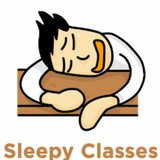As we move closer to the exam year, many of you are at a crossroads — whether to double down, change strategy, or find clarity.
Whether it’s GS, Sociology, PSIR, or just guidance — make sure you’re not alone in this journey.
Batch 3 is where a lot of serious aspirants are committed to their UPSC prep.
👥 Evening sessions. Final batches. Only if you’re ready to commit.
⏳ Window closes 30th June.
Whether it’s GS, Sociology, PSIR, or just guidance — make sure you’re not alone in this journey.
Batch 3 is where a lot of serious aspirants are committed to their UPSC prep.
👥 Evening sessions. Final batches. Only if you’re ready to commit.
⏳ Window closes 30th June.
Q.1. Which of the following conditions must be met for an invention to be granted a patent ?
1. It must be new .
2. It must involve an inventive step.
3. It must be useful for industrial application.
1. It must be new .
2. It must involve an inventive step.
3. It must be useful for industrial application.
Select the correct answer :
Anonymous Quiz
38%
A. 1 and 2 only
20%
B. 2 and 3 only
12%
C. 1 and 3 only
30%
D. 1, 2, and 3
Q.2. ‘Section 84’ of the Indian Patent Act, 1970 often in news, related to :
A. Evergreening
B. Copyright
C. Compulsory licensing
D. Painting
A. Evergreening
B. Copyright
C. Compulsory licensing
D. Painting
Q.3. Consider the following statements regarding Patent Pooling :
1. A patent pool is an agreement between multiple patent holders to license their patents to one another or third parties.
2. Patent pooling is always mandatory and regulated by the World Intellectual Property Organization (WIPO).
3. It can help reduce litigation costs and encourage innovation in industries such as pharmaceuticals and telecommunications.
1. A patent pool is an agreement between multiple patent holders to license their patents to one another or third parties.
2. Patent pooling is always mandatory and regulated by the World Intellectual Property Organization (WIPO).
3. It can help reduce litigation costs and encourage innovation in industries such as pharmaceuticals and telecommunications.
Which of the statements given above is/are correct ?
Anonymous Quiz
10%
A. 1 and 2 only
52%
B. 1 and 3 only
19%
C. 2 and 3 only
20%
D. 1, 2, and 3
👋🏽 Doston, we're having a Free Workshop for UPSC 2026 Aspirants to help them with their preparation with a personal roadmap.
The workshop is this Friday 4th July at 5:00 PM.
Register from here 🔗 https://sleepyclasses.com/upsc-gs-beginners-workshop/?source=Telegram
The workshop is this Friday 4th July at 5:00 PM.
Register from here 🔗 https://sleepyclasses.com/upsc-gs-beginners-workshop/?source=Telegram
Q.1. ‘iPSCs stem cells’ best refers to as which one of the following?
A. Stem cells created through the introduction of embryonic genes into a somatic cell.
B. Adult stem cells are present in all humans in small numbers.
C. Stem cells obtained from umbilical cord and the amniotic fluid
D. None of the above.
A. Stem cells created through the introduction of embryonic genes into a somatic cell.
B. Adult stem cells are present in all humans in small numbers.
C. Stem cells obtained from umbilical cord and the amniotic fluid
D. None of the above.
Q.2. ‘Genetic drift’ best refers to which one of the following situation ?
A. An increase in the number of copies of a gene in a genome.
B. The process of determining the location of genes on chromosomes.
C. It is the process used to control the timing, location and amount in which genes are expressed.
D. It is a mechanism of evolution characterized by random fluctuations in the frequency of a particular version of a gene in a population.
A. An increase in the number of copies of a gene in a genome.
B. The process of determining the location of genes on chromosomes.
C. It is the process used to control the timing, location and amount in which genes are expressed.
D. It is a mechanism of evolution characterized by random fluctuations in the frequency of a particular version of a gene in a population.
Q.3. Which of the following best describes the role of CCR5 in the human body ?
A. It helps regulate glucose metabolism.
B. It acts as a co-receptor for HIV entry into immune cells.
C. It is responsible for oxygen transport in the blood.
D. It plays a role in bone density regulation.
A. It helps regulate glucose metabolism.
B. It acts as a co-receptor for HIV entry into immune cells.
C. It is responsible for oxygen transport in the blood.
D. It plays a role in bone density regulation.
Q.1. Which of the following statements about Wolbachia bacteria are correct ?
1. Wolbachia is naturally found in many insect species.
2. It is genetically modified before being introduced into mosquitoes.
3. It prevents mosquitoes from transmitting viruses like dengue.
4. The Wolbachia method has been successfully used in some countries.
1. Wolbachia is naturally found in many insect species.
2. It is genetically modified before being introduced into mosquitoes.
3. It prevents mosquitoes from transmitting viruses like dengue.
4. The Wolbachia method has been successfully used in some countries.
Choose the correct option :
Anonymous Quiz
6%
A. 1 and 2 only
29%
B. 2 and 3 only
34%
C. 1, 3, and 4 only
31%
D. 1, 2, 3, and 4
Q.2. Consider the following matches in context to Drones categories :
1. Nano Less than 250 grams
2. Small 250 grams to 2 Kg
3. Medium 2 Kg to 25 Kg
1. Nano Less than 250 grams
2. Small 250 grams to 2 Kg
3. Medium 2 Kg to 25 Kg
